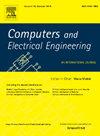Intelligent management of waste bins in indoor public places based on waste detection and recognition
IF 4
3区 计算机科学
Q1 COMPUTER SCIENCE, HARDWARE & ARCHITECTURE
引用次数: 0
Abstract
Due to the lack of convenient waste bins nearby, many people choose to litter indiscriminately in indoor public places. Dirty floors not only diminish the shopping experience of customers, but also increase potential risks to pedestrian safety. For the intelligent management of waste bins in indoor public places, this paper proposes a novel solution based on automatic waste detection and recognition, which helps to minimize littering and improve the recycling efficiency of indoor waste. This solution mainly uses a deep learning model to detect and recognize waste items, which can effectively record the distribution of waste and provide a basis for the reasonable placement of waste bins. Specifically, we construct a high-quality indoor waste image dataset for waste detection, which can provide an effective data source for model optimization of this task. This dataset is collected from three common public places, including hospitals, supermarkets, and subway stations. At the same time, it contains four waste categories, 4000 color images, and 6968 box-level annotations. In addition, we propose a novel feature decoupling network for indoor waste detection and recognition, which disentangles specific features for different vision tasks. On the one hand, it uses a recognition enhancement module to generate discriminative feature maps with more semantic information. On the other hand, it introduces a detection enhancement module to output rich feature maps with more detail information. As plug-and-play modules, these two modules are suitable for different networks. Relevant experimental results show that our method is competitive with other representative object detection models and can achieve consistent performance improvements on distinct models. In general, our solution provides new insights into indoor waste bin management.
基于垃圾检测识别的室内公共场所垃圾箱智能化管理
由于附近没有方便的垃圾箱,许多人选择在室内公共场所乱扔垃圾。肮脏的地板不仅会降低顾客的购物体验,还会增加行人安全的潜在风险。针对室内公共场所垃圾箱的智能管理,本文提出了一种基于垃圾自动检测识别的新颖解决方案,可以最大限度地减少乱扔垃圾,提高室内垃圾的回收效率。该方案主要利用深度学习模型对垃圾物品进行检测和识别,可以有效记录垃圾的分布情况,为垃圾箱的合理放置提供依据。具体而言,我们构建了一个高质量的室内垃圾图像数据集用于垃圾检测,可以为该任务的模型优化提供有效的数据源。这个数据集是从三个常见的公共场所收集的,包括医院、超市和地铁站。同时,它包含四个废物类别,4000个彩色图像和6968个框级注释。此外,我们提出了一种新的特征解耦网络用于室内垃圾检测和识别,该网络可以针对不同的视觉任务解耦特定的特征。一方面,利用识别增强模块生成具有更多语义信息的判别特征图;另一方面,引入检测增强模块,输出具有更多细节信息的丰富特征图。这两个模块作为即插即用模块,适用于不同的网络。相关实验结果表明,该方法与其他具有代表性的目标检测模型相比具有一定的竞争力,并且在不同的模型上可以实现一致的性能提升。总的来说,我们的解决方案为室内垃圾箱管理提供了新的见解。
本文章由计算机程序翻译,如有差异,请以英文原文为准。
求助全文
约1分钟内获得全文
求助全文
来源期刊

Computers & Electrical Engineering
工程技术-工程:电子与电气
CiteScore
9.20
自引率
7.00%
发文量
661
审稿时长
47 days
期刊介绍:
The impact of computers has nowhere been more revolutionary than in electrical engineering. The design, analysis, and operation of electrical and electronic systems are now dominated by computers, a transformation that has been motivated by the natural ease of interface between computers and electrical systems, and the promise of spectacular improvements in speed and efficiency.
Published since 1973, Computers & Electrical Engineering provides rapid publication of topical research into the integration of computer technology and computational techniques with electrical and electronic systems. The journal publishes papers featuring novel implementations of computers and computational techniques in areas like signal and image processing, high-performance computing, parallel processing, and communications. Special attention will be paid to papers describing innovative architectures, algorithms, and software tools.
 求助内容:
求助内容: 应助结果提醒方式:
应助结果提醒方式:


